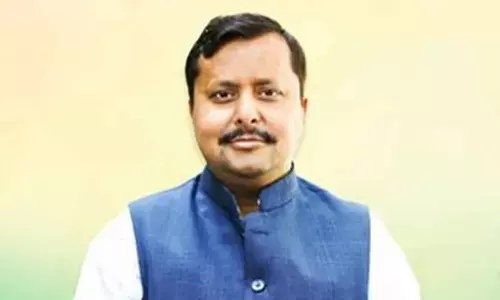Making IVF process easy

It has been 41 years since the birth of the world's first IVF baby, Louise Brown. The day has since been observed as World IVF Day, inspiring and giving hope to millions of infertile couples of completing their family.
Today, with the advancement of medical science and technology, the IVF industry has grown leaps and bounds, providing couples battling infertility with advanced treatment options and solutions.
India has nearly 10-15 per cent of married couples who suffer from the inability to conceive naturally. IVF has been the solution for several such couples, helping them achieve their dream of parenthood. IVF is a complex modern medical procedure and one of the most well known fertility treatments in practice today.
The IVF process includes the artificial stimulation of the ovaries to produce multiple eggs, removal of the eggs from the ovary (egg retrieval), selection of healthy sperms, fertilization of the eggs in the laboratory, and subsequent placement of the resulting embryos into the uterus (embryo transfer).
The evolution of Assisted Reproductive Technology has helped provide more safer and effective treatment options for couples who have been unable to conceive for different reasons.
Elaborating on the technological developments in the IVF industry over the years, Dr Saroja Koppala, Fertility Consultant, NOVA IVI Fertility, Hyderabad commented, "IVF has transformed the field of infertility since its inception in 1978. Major milestones in perfecting IVF were developed quickly since then, including the use of controlled ovarian hyperstimulation, luteal phase support, and improved culture media.
Other significant advances soon followed with the development of intracytoplasmic sperm injection (ICSI), assisted hatching, and description of optimized ET techniques. These advancements improved the success rates associated with ART and the number of couples opting for IVF treatment."
Improvements in culture medium, equipment's, laboratory controls and cryopreservation techniques have increased the success rates in assisted reproduction. Following are some of the global best practices in the IVF industry that have helped ensure better
success rate:
Intracytoplasmic Sperm Injection (ICSI)
ICSI is a technique sometimes used with in vitro fertilisation (IVF) in which one sperm is injected directly into one egg in order to fertilise it. This is especially useful for men with very low sperm counts since ICSI ensures that the sperm reaches the egg directly rather than waiting for the sperm to naturally fertilise the egg.
ICSI is currently the most successful treatment for male infertility, withfertilisation rates of 60 per cent-70 cent depending on quality of the sperm used. In some cases, assisted hatching may be used to increase the chances of implantation.
Pre-implantation Genetic Testing – Aneuploidy and Monogenic Disorder Genetic testing is divided into separate categories: Preimplantation Genetic Testing - Aneuploidy (PGT-A) and Preimplantation Genetic Diagnosis – Monogenic Disorder (PGT-M). All couples are at risk of having abnormal embryos.
The risk increases significantly as a woman gets older. An abnormal embryo almost always fails to implant, or even if it does, the pregnancy ends in a biochemical pregnancy, miscarriage, foetal death later in pregnancy, stillbirth or a baby with abnormalities.
PGT-A is observed to improve the success rate of IVF by 15-20 per cent. The test is used to determine the number of chromosomes in an embryo. The normal number of chromosomes in an embryo is 46 and any missing number is characterised as a defect. Once the embryo grows in the lab, it is usually biopsied on day five, which is called the blastocyst stage. Then the number of chromosomes within each cell is counted in these embryos.
PGT-M helps fertile couples who have a history of genetic condition in their families or any condition for which the couple's offspring are at risk. The technology helps in screening the embryos for specific genetic diseases and chromosomal disorders, for example, single gene disorders including cystic fibrosis and sickle cell anemia. PGD can be used to identify approximately 2,000 inherited single gene disorders and is 98 percent accurate in identifying affected and unaffected embryos.














